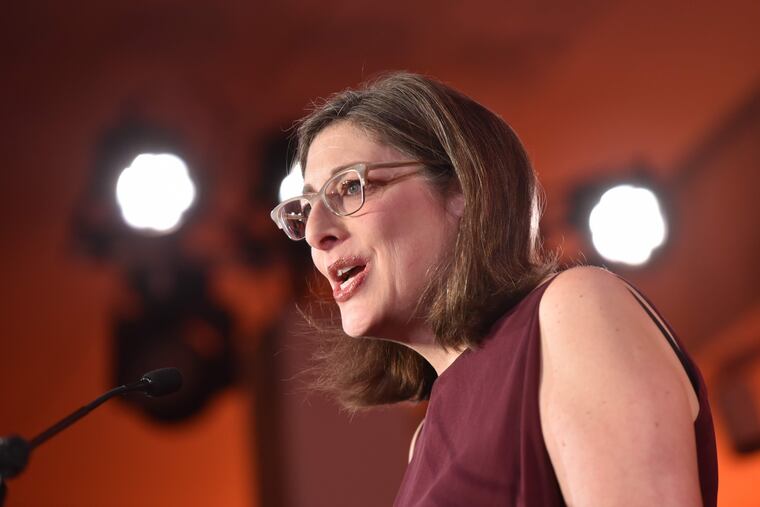Head of Jewish Museum resigns
The museum has put together highly regarded exhibitions, but it has struggled financially.

Ivy L. Barsky, the chief executive of the National Museum of American Jewish History, who has steered the institution through rough economic weather while mounting some highly regarded exhibitions, has resigned and will leave the institution at the end of June.
In a statement, Barsky, 55, said it has been “a great privilege” to head the museum, at Fifth and Market Streets. She did not say what she planned to do. Nor was she available Monday for comment.
Philip Darivoff, chair of the museum’s board of trustees, praised Barsky as “a determined champion of our mission in an increasingly competitive landscape for cultural institutions of every type.” In a statement, he made note that Barsky “built a great team,” which "is an important part of the museum’s future.”
The museum has faced financial challenges over the years. In 2012, when Barsky was named chief executive officer, attendance was declining but expenses were not. The museum had opened its $150 million building in 2010.
Some staff members were let go, departments were rearranged, and a strategic plan was put in place. Barsky paid particular attention to programming, backing major exhibitions on Leonard Bernstein, religious freedom, baseball in the life of Jewish America, and the photographs of Richard Avedon, to name a few.
Currently, the museum is showing “Sara Berman’s Closet,” an idiosyncratic exhibition put together by writer and artist Maira Kalman and her son, artist and curator Alex Kalman.
In 2017, there was another serious retrenchment. Some layoffs occurred, empty positions were not filled, salaries were frozen. Barsky took what she characterized as a modest reduction of $25,000 to her $324,000 salary.
Even the cafe was closed.
At the time, Barsky said the cuts and refocusing would save about $1.3 million annually. The museum was then facing a $1.8 million annual shortfall.
Despite such difficulties, Barsky sought to establish programming and operational partnerships with other area institutions, such as the African American Museum in Philadelphia. She also oversaw the creation of the National Educators Institute and a national curriculum on American Jewish history.
Stephen A. Cozen, vice chair of the museum board, praised Barsky for her vision and programming abilities and said that the museum’s finances were “not a consideration for me" in looking down the road.
“I am quite satisfied that the future of the museum is well in hand,” he said. “As far as I know, we’re meeting our obligations.”
Cozen acknowledged that the museum is not “sitting on some overwhelmingly large endowment” that can be used to cover operating shortfalls. (The endowment is about $5 million, according to the museum’s 2017 tax return.)
“We do think there’s a good base and opportunities to increase revenues,” he said. “We intend to take advantage of them.”
The board has engaged Misha Galperin, president of Zandafi Philanthropy Advisors, to begin working with the board and staff to put a transition plan in place over the next several weeks.